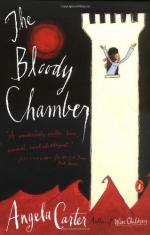|
This section contains 16,463 words (approx. 55 pages at 300 words per page) |

|
SOURCE: Michael, Magali Cornier. “Fantasy and Carnivalization in Angela Carter's Nights at the Circus.” In Feminism and the Postmodern Impulse: Post-World War II Fiction, pp. 171-208. Albany: State University of New York Press, 1996.
In the following essay, Michael examines Carter's utopian feminist vision in Nights at the Circus.
With extravagant playfulness, Angela Carter's Nights at the Circus (1984) weaves together elements of the carnivalesque and fantastic with those of harsh material realism as vehicles for feminist aims. Carter's novel is the literary heir of Virginia Woolf's Orlando and Djuna Barnes' Nightwood, both of which engage the fantastic and the carnivalesque, and indeed is more literary or fully artificial than the novels of Lessing, Piercy, and Atwood. Set in 1899, Nights at the Circus purports to usher in the twentieth-century. Carter's depiction of the past is strikingly familiar, however, which suggests that the present is effectively her target and that 1899 and...
|
This section contains 16,463 words (approx. 55 pages at 300 words per page) |

|


